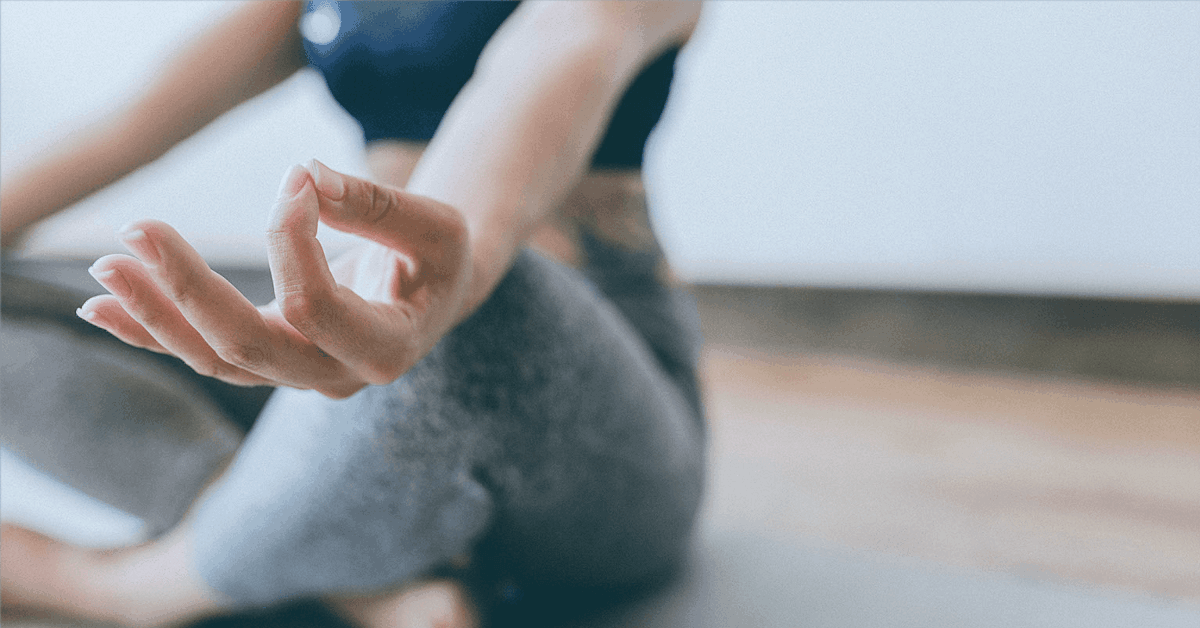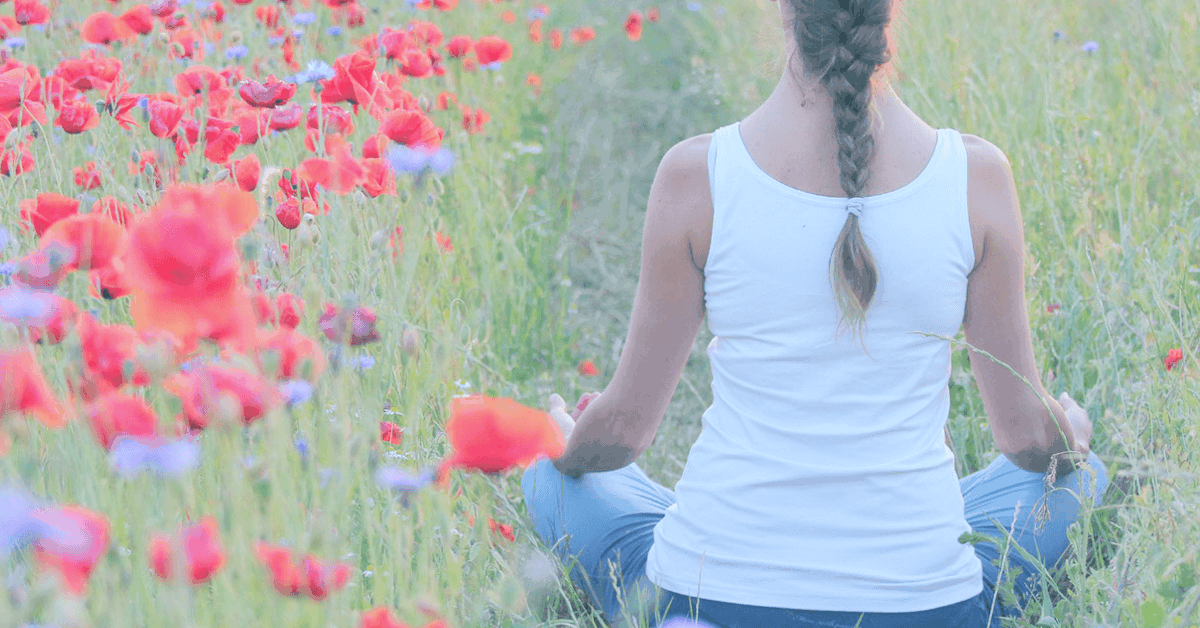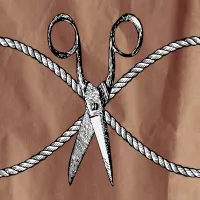Benefits of Practicing Supine Yoga Poses
Supine yoga poses are often overlooked and undervalued. Here is why (and how) they can help your physical and mental wellbeing.

Practicing yoga can come in many forms. Often yoga students attend classes that involve flowing through dynamic yoga sequences or sweating in heat-regulated studios. These forms of yoga may require some stamina and endurance, but not all yoga classes are like this. Your yoga practice can also be an opportunity to move more slowly and intentionally. Specific yoga poses are designed to induce relaxation and release. An example of such poses is supine yoga poses or postures that are practiced lying down.
This article will focus on the benefits of practicing supine yoga postures, when to use them, and offer five poses you can practice at home.
What is a Supine Yoga Pose
Supine means lying down on your back. Even in Sanskrit, the ancient language of yoga, 'supta' refers to the reclining position. Poses like Reclining Bound Angle Pose (Supta Baddha Konasana) and Corpse Pose (Savasana) are practiced while lying on your back.
The Benefits of a Supine Yoga Pose
As opposed to generating strength and endurance while practicing some yoga postures, supine yoga poses allow your body to experience release and relaxation. Due to the body position, your body is allowed to rest from weight-bearing exercises. So much tension is built up in the body that less tension is often needed. Not only will it lead to less stress on your muscles, but also helps to reduce the tension that builds in your mind.
While performing yoga poses on your back, you can stretch tight muscles in your legs, release tension in your hip joints, and relieve tension in your sore back. These postures and some will be described below, are often done with yoga props like yoga straps and blocks for added support.
Another benefit to practicing this style of yoga postures is that they can be done by most yogis. You do not have to be proficient in the practice to experience the positive results they provide. If you're new to the yoga practice, these may be the ideal postures to start with.
When Should You Practice Supine Yoga Poses
This form of yoga posture can be done anytime and by anyone. If you happen to be an athlete that plays a demanding sport, these reclining postures can help soothe your body as well as promote faster and more efficient muscle recovery.
Using some of these postures while healing from an injury or surgery can also be helpful. Be sure to consult with a doctor before practicing any style of yoga so that you do not cause any additional harm. You want your healing process to be safe and long-lasting.
Supine yoga poses are not only for physical relaxation, but these particular postures also have a positive effect on your mind. Because your body is relaxed, your mind also has an opportunity to relax. When you perform some of these poses, you often hold in stillness for a few moments. This promotes ease in your mind, too. You're allowed to refrain from stressful thoughts while taking slow deep breaths. This helps you stay in the moment and focused on your stretching routine. The slow deep breathing, too, will help lower your blood pressure and heart rate encouraging mental clarity and positive well-being. So, if you're feeling stressed, practicing supine yoga poses is ideal.
We all know that meditation is good for us. But if sitting for hours in one position is not for you, then this article offers simple daily meditation methods.
lifeism.coEven some rigorous yoga practices like Power Vinyasa Yoga offer supine yoga positions, but you can devote an entire practice to these particular yoga poses. Here are some supine yoga poses you can practice at home. Put them together to create a full yoga routine to relieve muscle tension and mental stress.
Remember to practice any type of yoga with caution and care when you are on your own. Take your time and move slowly as you perform these and other yoga positions. Modify poses and use yoga props to further support your body. Assess how your body feels as you engage in yoga practice. If at any time you feel any discomfort or pain, simply move out of the posture. It is always a good idea to consult a doctor and/or a yoga instructor before performing yoga poses due to the risk of physical injury.
5 Supine Yoga Poses to Practice at Home
- Leg Extension
- Reclining Bound Angle Pose
- Happy Baby Pose
- Legs Against The Wall
- Savasana
Leg Extension
The Leg Extension Pose can be practiced lying on your back on the floor or on a yoga mat. It is a wonderful way to stretch tight hamstrings. A yoga strap, belt, or jump rope will come in handy while practicing this posture.
Start by lying on your back with your knees bent and feet planted on the floor. Raise your right foot and draw your knee toward your chest. If you are using a yoga strap (or similar prop), wrap it around the sole of your foot. Slowly extend your leg toward the ceiling until you feel a light stretch through your hamstring. Hold the position for 30 seconds to 1 minute.
There is no need to fully straighten your leg. It is fine to keep a slight bend in your knee while performing this yoga posture. The idea is to feel a stretch, but not to strain the muscle. After you have completed the pose on the first leg, be sure to practice the pose on the other.
Reclining Bound Angle Pose
There are several ways to practice Reclining Bound Angle Pose in a yoga class, but here is a way that ensures the least amount of resistance in the body. The intention of this pose is to release tension in your hips, inner legs, and lower back. A set of yoga blocks or hard-bound books can be used to help support your body in this yoga pose.
Lie on your yoga mat with your knees bent and feet flat on the floor. Bring your legs together so they touch. Slowly open your knees outward toward the floor. As they open, press the soles of your feet together.
Your knees may not touch the floor (nor do they have to.) If needed, place a block (or another firm prop) under each knee. This will allow your legs to fully relax while you hold this posture. Hold the pose for 1 to 3 minutes. (You are welcome to hold the posture longer as you feel comfortable.) This gentle stretch allows the muscle fibers in your inner legs to slowly release as this part of the body tends to build up much tension. When you are complete with the pose, extend your legs out onto the floor in a neutral supine position.
Happy Baby Pose
Much like Reclining Bound Angle Pose, Happy Baby Pose is practiced to help release tight hips. Often this pose is practiced with both legs at the same time, but performing the pose one leg at a time will offer a deeper stretch.
Start this posture lying on your yoga mat with your knees bent and feet on the floor. This will allow your lower back and hips to relax before moving into the pose. Extend your left leg straight out onto the floor. Draw your right knee toward your chest. As you are able, reach up with your right hand to hold onto the sole of your right foot. (Your knee will remain bent.) If you are unable to reach the bottom of your foot, you can hold onto your ankle or the back of your leg instead.
Gently press down on your foot so it feels as if your knee is reaching toward the floor. Notice the stretch in your inner leg and hips. As with most poses, you do not need to press hard or go too deeply into this pose. Move to the point where you feel a light stretch and hold the position so your body gets accustomed to the sensation. Hold for 30 seconds to 1 minute. Be sure to perform the pose on the other side.
Legs Against The Wall Pose
Legs Against the Wall is a wonderfully relaxing posture that also offers improvement in circulation and digestion. If you are on your feet all day, this posture will help relieve tired feet and legs while providing a gentle stretch in your hamstrings. Further, if you are experiencing swelling in your legs, this will help with more efficient blood circulation.
It can be a little tricky getting into the posture, but here is a method that should help you. A folded blanket can be used to offer lower back support as needed.
You will need to have a clear wall space to practice this yoga supine pose. Start in a seated position with your left shoulder against the wall. Carefully lean away from the wall as you swing your legs up along the wall. This is an easier way to ensure your whole back side touches the wall as your legs extend upward. Hold the posture for 3 to 5 minutes as it feels comfortable for you.
Savasana
This yoga pose is commonly practiced at the end of most yoga classes. It is an opportunity for your entire body and mind to relax after active movement. This supine pose can also be practiced on its own as a way to deactivate your muscles, clear your mind, and allow time for meditation. You may want to use props like blankets or pillows to support various parts of your body since you will hold this pose for 5 to 10 minutes.
Simply lie on your back with your legs straight out in front of you. You can take your legs a little wider for greater comfort. Rest your arms down by your side with your palms facing upward. As needed, use a blanket under your body and a bolster or pillow under your knees so you feel fully relaxed.
Close your eyes and take slow gentle breaths. As you rest and relax, focus on the steady flow of your breathing to experience a full sense of calm. This yoga supine pose allows the parasympathetic nervous system of your body to activate. This triggers rest and digestion in your body. Further, it helps to lower your heart rate and pulse for a healthy heart.
Practice Yoga Supine Poses Regularly
Whether you have an active lifestyle, are recovering after an injury, or need to release tension in your body and mind try practicing these yoga supine poses. The ones listed here can be practiced individually or combined to create a short personal practice.
Feeling stagnated and stuck? Need to relieve stress? Try these yoga poses to get you through the slump.
lifeism.coTry performing these poses at least 3 times a week to notice a change in your body and mental well-being. You will certainly enjoy the positive results of these truly healing yoga poses.







Comments